There’s no award in the restaurant world more feared, coveted, or misunderstood than the Michelin Star. It can catapult a chef’s career, drive global reservations, and set a new benchmark for excellence. But it can also raise expectations to an unsustainable level, putting immense pressure on consistency, creativity, and leadership.
Despite the notion, getting a Michelin Star has nothing to do with luxury or expensive ingredients. It takes mastery of flavor, detail, and identity. The inspectors don’t tell you they’re coming. They don’t care about how viral you are on Instagram. They don’t award stars based on popularity.
So, how to get a Michelin star? This guide sets the standards for what it actually takes to be recognized.
What Is a Michelin Star and Why Does It Matter
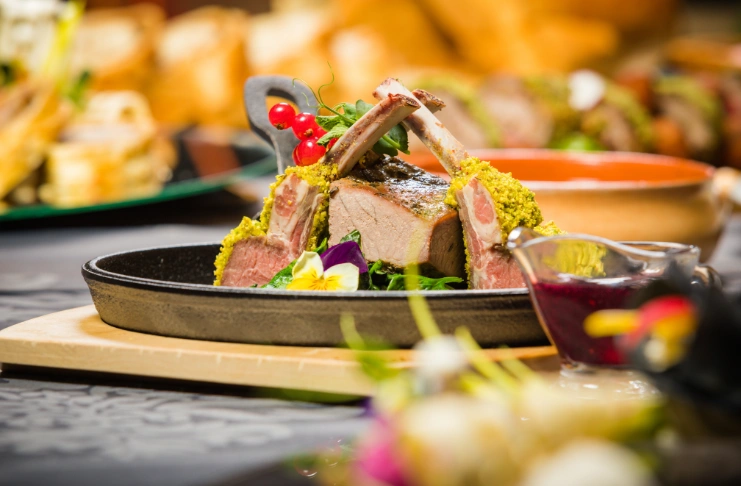
A Michelin Star is among the most respected honors in the global restaurant industry. It signals that a restaurant delivers exceptional food and service at the highest level. Stars are awarded by anonymous Michelin inspectors who follow strict guidelines set by the Michelin Guide.
There are three levels of recognition:
- One Star means a very good restaurant in its category.
- Two Stars mean excellent cooking worth a detour.
- Three Stars means exceptional cuisine worth a special visit.
Michelin Star ratings are not permanent. They are reviewed annually. Based on performance, a restaurant can gain, keep, or lose a star. This is why consistency is critical.
The Michelin Guide originally started in France in 1900. It was published by the Michelin tire company to help French motorists find places to eat and stay while traveling. Over time, it became a trusted source for evaluating fine dining. Today, the guide covers over 40 countries and regions.
Michelin Stars matter because they influence public perception. They boost reputation, drive media attention, and often lead to a significant increase in revenue. A single star can change a chef’s career. Three Michelin Stars can cement an establishment’s place among the world’s top restaurants.
This recognition is not bought or requested. It must be earned through excellence and maintained through discipline.
How the Michelin Star Rating System Works
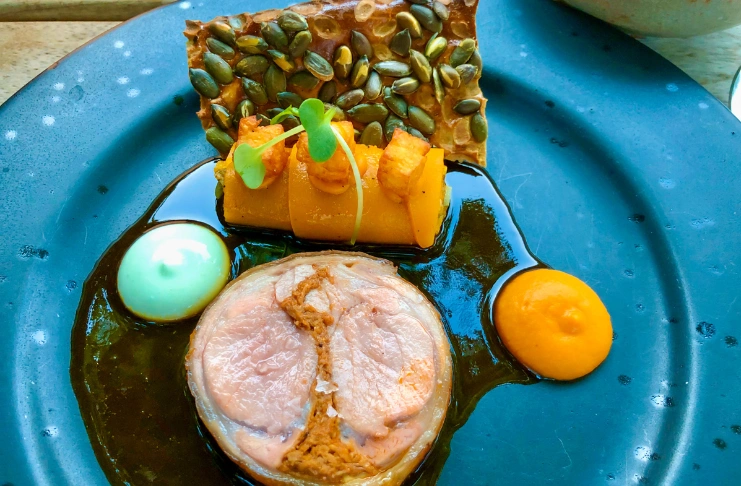
The Michelin Star rating system is simple on paper but hard to crack in practice. Restaurants can be awarded one, two, or three stars based on five core factors evaluated by Michelin inspectors:
- Ingredient quality
- Mastery of flavor and cooking techniques
- The personality of the chef in the cuisine
- Value for money
- Consistency over time and across the entire menu
These factors are applied to the restaurant’s food, not service, ambiance, or décor. Those are reviewed separately but do not influence the star rating.
What Each Star Means:
- One star signals a very good restaurant that gets the basics right with care and attention.
- Two stars mean the cooking is worth the effort, with standout flavors and refined techniques.
- Three stars are reserved for restaurants where every dish delivers exceptional food, from concept to execution. This is rare air.
This star system does not use public nominations or applications. Michelin inspectors visit anonymously, pay for their meals, and do not announce their presence. The entire process is based on professional standards.
A panel of Michelin inspectors discusses a restaurant’s rating before it is finalized. No single person decides whether a star is given or taken away.
Michelin also awards Green Stars to restaurants that strongly focus on sustainability and Bib Gourmand to restaurants that offer excellent food at a reasonable price.
Who Are Michelin Inspectors and How They Score You

Michelin inspectors are full-time, anonymous professionals with deep experience in the culinary arts. Most have worked as chefs, sous chefs, or in high-end fine-dining kitchens. Some have been trained at top culinary schools. Their job is to evaluate restaurants using the official Michelin Guide criteria, with no personal bias.
They visit without notice, sometimes multiple times, and always pay their own way. Restaurants never know who they are or when they’ll come. There’s no form to fill out or a nomination process to get a Michelin inspector to visit. The Michelin Guide selects restaurants based on internal research, recommendations, and regional buzz.
What they look for:
- Ingredient sourcing and quality
- Mastery of cooking techniques
- Harmony and clarity of flavors
- Your head chef’s unique style on the plate
- Whether the dining experience holds up on repeat visits
The process is slow, thorough, and highly guarded. The Michelin star rating system is built to reward consistency over time. Even one flawed visit can hold you back.
A single inspector does not make the decision. Reports from multiple visits and inspectors are reviewed before any Michelin star is awarded or withdrawn.
The Five Universal Criteria That Determine Your Michelin Star Status
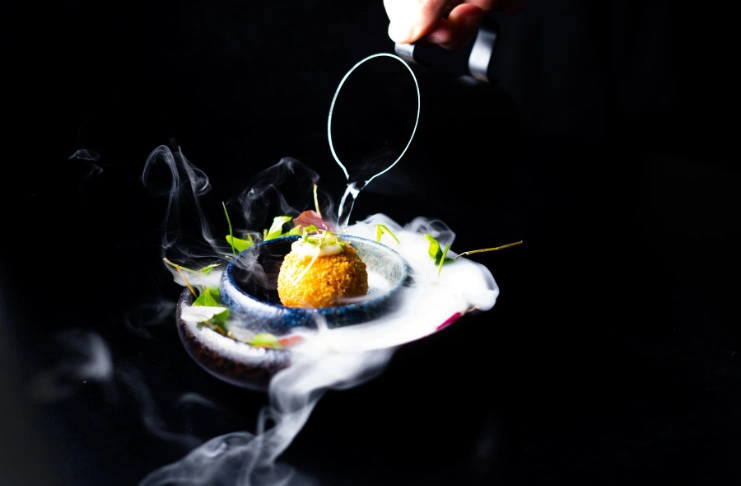
Want a Michelin star? You must first understand how these five criteria fit into the picture and how every starred restaurant worldwide meets these standards without exception.
Quality of Ingredients Used
Ingredient quality forms the foundation of exceptional cuisine. This doesn’t mean using the most expensive products. It means sourcing the best ingredients available within your concept and price point.
Michelin inspectors can taste the difference between fresh, high-quality ingredients and those that cut corners. They know when proteins are properly aged, when vegetables are picked at peak ripeness, and when specialty ingredients are authentic.
What you need to do:
- Build relationships with trusted suppliers who understand your standards
- Source seasonal ingredients at their peak quality
- Maintain proper storage and handling procedures
- Document your sourcing to ensure consistency
Mastery of Flavor and Cooking Techniques
Technical skill separates good restaurants from Michelin-star restaurants. Inspectors evaluate your team’s ability to execute fundamental techniques flawlessly while showcasing creativity and innovation.
This includes knife skills, seasoning balance, cooking temperatures, timing, and presentation. Advanced techniques like fermentation, curing, or molecular gastronomy must be executed with precision and purpose.
Key areas of focus:
- Master basic techniques before attempting advanced methods
- Understand how different cooking methods affect flavor and texture
- Train your team to execute consistently under pressure
- Document techniques to maintain standards across shifts
Personality of the Chef in the Cuisine
Your restaurant needs culinary identity. Michelin inspectors look for chefs who have developed a distinct voice through their food. This personality should be evident across the menu.
This doesn’t mean every dish needs to be revolutionary. It means your cooking should reflect a clear vision, cultural understanding, and personal approach to your chosen cuisine style.
How can you develop a culinary personality?
- Define your cooking philosophy and stick to it
- Study the traditions of your chosen cuisine deeply
- Add personal touches that reflect your background and experiences
- Create signature dishes that showcase your unique approach
Value for Money Consideration
Value doesn’t mean cheap. Michelin inspectors evaluate whether the quality of food justifies the price point. A $200 tasting menu and a $25 lunch special can both offer excellent value if the quality matches the cost.
This criterion considers portion sizes, ingredient costs, preparation complexity, and overall dining experience relative to price.
To achieve a proper value:
- Price menu items based on actual costs and market position
- Ensure portion sizes match price expectations
- Offer quality that exceeds what customers expect at your price point
- Balance premium ingredients with more affordable options strategically
Consistency Over Time and Across the Menu
Consistency might be the hardest criterion to master. Michelin inspectors expect every dish to meet the same high standards every time they visit. This applies across different seasons, staff changes, and varying business volumes.
One outstanding dish cannot carry a mediocre menu. Every item must demonstrate the same level of care, technique, and quality.
To build such a level of consistency:
- Create detailed recipes and preparation guides
- Train multiple staff members for each position
- Implement quality control systems throughout the service
- Monitor and adjust based on seasonal ingredient changes
Once your restaurant consistently delivers on all five of these criteria, you’re already operating at the level Michelin considers star-worthy.
What Restaurant Owners Need to Know About Pursuing Michelin Stars
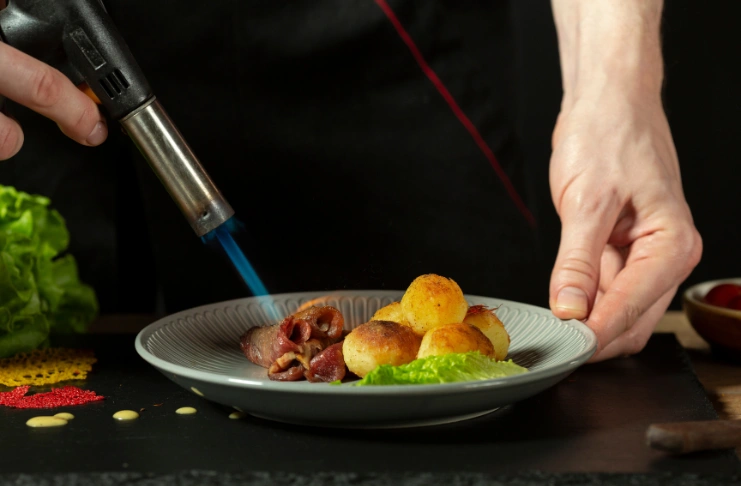
Getting a Michelin star requires strategic planning, financial investment, and long-term commitment. Here’s what every restaurant owner should know:
Financial Reality of Michelin Star Pursuit
Pursuing a Michelin star costs money. Food costs typically increase 25-40% when sourcing premium ingredients. Labor costs rise when hiring experienced culinary professionals. Equipment upgrades become necessary to execute advanced techniques.
The budget for this investment is over 2-3 years, minimum. Many restaurants operate at reduced profits while building a reputation and refining operations.
Timeline Expectations for Recognition
Getting a Michelin star takes time. Most restaurants operate for 2-3 years before receiving recognition. Michelin inspectors need multiple visits across different seasons to evaluate consistency.
This timeline assumes you’re already operating at a high level. If you’re building from scratch, add another 1-2 years for team development and operational refinement.
Realistic timeline factors:
- 6-12 months for initial team building and menu development
- 12-18 months for operational consistency and reputation building
- Multiple inspector visits over 6-12 months before potential recognition
- Ongoing refinement and improvement throughout the process
Market Positioning Strategy
Position your restaurant thoughtfully within your local dining market. Research existing starred restaurants in your area. Understand what makes them successful and identify gaps you can fill.
Your concept should feel authentic to your vision while offering something distinct from competitors. Authenticity resonates with both Michelin inspectors and customers.
Step-by-Step Guide: How to Get a Michelin Star

Getting a Michelin star isn’t about campaigning. It’s about aligning your entire operation with excellence day after day, service after service. While the Michelin Guide doesn’t accept applications, there’s a clear path that successful restaurants tend to follow.
Step 1: Define Your Culinary Concept and Identity
Start with a clear vision of what you want your restaurant to represent. This concept should reflect your background, interests, and expertise while offering something meaningful to diners.
Your culinary identity should be evident in every dish. Whether you’re focused on regional cuisine, modern techniques, or fusion concepts, commit fully to your chosen direction.
Here’s what you should do:
- Write a clear mission statement for your restaurant
- Define your target cuisine and cooking style
- Identify signature techniques or ingredients that will define your cooking
- Research successful restaurants in similar categories
Step 2: Build Your Culinary Team
Assemble a team capable of executing your vision consistently. This starts with hiring experienced cooks who understand fine dining standards and can grow with your concept.
Your sous chef should complement your skills and share your commitment to excellence. Line cooks need technical proficiency and attention to detail. Everyone must understand that consistency is non-negotiable.
Step 3: Develop Your Menu Strategy
Create a menu that showcases your strengths while remaining practical for consistent execution. Start with fewer dishes executed perfectly rather than a large menu with inconsistent quality.
Each dish should serve a purpose on the menu. Avoid adding items just to fill space. Every plate should represent your best work and contribute to the overall dining experience.
Step 4: Master Your Supply Chain
Develop relationships with suppliers who can provide consistent quality ingredients. This includes produce vendors, protein suppliers, and specialty ingredient sources.
Visit your suppliers regularly. Understand their operations, seasonal availability, and quality standards. Build backup relationships for critical ingredients.
Who should be your sourcing priorities?
- Local farms for seasonal produce
- Trusted protein suppliers with consistent grading
- Specialty vendors for unique ingredients
- Backup suppliers for rare-to-find menu items
Step 5: Implement Quality Control Systems
Create systems that ensure consistent quality regardless of which team members are working. This includes detailed recipes, preparation timelines, and quality checkpoints throughout the service.
Document everything. Write down recipes, cooking times, temperatures, and plating instructions. Create checklists for prep work and service procedures.
Step 6: Train Your Team Continuously
Invest in ongoing training for your entire team be it on technique refinement, preparing new dish, or maintaining standards during busy periods.
Create a culture of learning and improvement. Encourage questions and provide feedback regularly. Celebrate successes and address problems immediately.
Your training components should include:
- Weekly technique sessions for skill development
- New dish training with detailed explanations
- Tasting sessions to understand flavor profiles
- Cross-training to ensure coverage for all positions
Step 7: Focus on Consistency Over Perfection
Aim for consistent results rather than occasional perfection. Michelin inspectors value restaurants that deliver high-quality food every time over those with inconsistent but occasionally brilliant dishes.
Track your performance daily. Keep notes on what works and what needs improvement. Address problems systematically rather than hoping they’ll resolve themselves.
INDUSTRY INSIGHT
| As of 2025, the Michelin Guide US features 234-starred restaurants, with only 13 earning the prestigious three-star rating for truly exceptional cuisine. The U.S. ranks mid-tier globally compared to France (692), Japan (388), Italy (385), Spain (268), and the U.K. (187). Beyond starred venues, 1,536 establishments in the U.S. hold some form of Michelin recognition, spanning diverse cuisines from Italian and Mexican to shabu-shabu. |
Alternative Michelin Recognition Options

Not every great restaurant earns a Michelin Star. But that doesn’t mean you’re off the Michelin radar. The Guide offers other recognitions that matter especially for restaurants still evolving toward star-level service.
Bib Gourmand Recognition
Bib Gourmand recognizes restaurants offering excellent food at moderate prices. This recognition focuses on value and quality rather than luxury dining experiences.
These establishments typically serve three-course meals under specific price points while maintaining high food quality standards. Many restaurants earn Bib Gourmand status before eventually receiving Michelin star ratings.
The key advantages of getting a Bib Gourmand are:
- Recognition without the pressure of star-level expectations
- Appeals to value-conscious diners
- Often serves as a stepping stone to star recognition
- Lower operational costs than star-level restaurants
Green Star Sustainability Recognition
The Green Star recognizes restaurants with outstanding commitment to environmental sustainability. This recognition considers ingredient sourcing, waste reduction, energy efficiency, and community impact.
Sustainable practices include working with local suppliers, minimizing food waste, using renewable energy, and supporting environmentally responsible farming practices.
Michelin Plate Acknowledgment
Michelin Plate status indicates restaurants offering good cooking that doesn’t quite reach star level. This recognition acknowledges quality establishments providing satisfying dining experiences.
Restaurants can use the Michelin Plate status as motivation for improvement while receiving official acknowledgment from the Michelin guide.
Common Obstacles in Pursuing Michelin Star Recognition
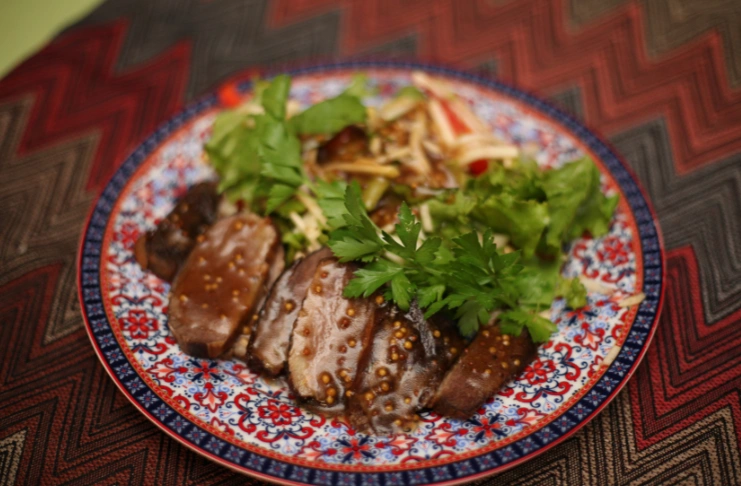
Getting a Michelin Star isn’t just about cooking great food. Many restaurants with exceptional cuisine still fall short. Here’s what typically gets in the way and how to avoid those pitfalls.
Consistency Challenges
Maintaining consistent quality across all service periods presents the biggest challenge for most restaurants. Seasonal ingredient changes, staff turnover, and varying business volumes all affect consistency.
Develop systems that function regardless of external variables. Document procedures thoroughly and cross-train team members to handle multiple positions.
Financial Sustainability
Pursuing Michelin recognition often requires operating at reduced profit margins during the development phase. Higher ingredient costs, skilled labor expenses, and equipment investments strain cash flow.
Plan realistic budgets that account for extended investment periods. Consider whether your market can support the pricing necessary to maintain Michelin-level quality.
Team Retention and Development
High-quality staff command higher wages and have more career opportunities. Retaining talented team members requires competitive compensation, professional development opportunities, and positive work environments.
Invest in your team’s growth and create advancement paths within your organization. Staff stability directly impacts consistency and quality.
What Happens After Earning a Michelin Star?

Earning a Michelin star marks a major milestone in a restaurant’s journey, but it’s far from the end. The real challenge begins the day after recognition.
A star immediately boosts visibility, often resulting in a surge in reservations, media coverage, and customer expectations. Many restaurants experience fully booked tables for weeks or even months.
But with the spotlight comes pressure. Michelin inspectors return unannounced, and the standards only get stricter. You’ll need to maintain flawless execution across every dish, service, and shift. Any slip in consistency can cost you the star.
Internally, the team must stay sharp. Ongoing training, feedback loops, and a culture of constant refinement become non-negotiable.
There’s also the business upside. A Michelin star often brings investment interest, opportunities to raise prices, or even launch a second concept. However, expansion must be strategic. Diluting your identity for growth can backfire.
The restaurants that keep their stars are those that protect their core while evolving thoughtfully. A Michelin star changes everything, but it also demands your everything.
Conclusion
Getting a Michelin star requires combining exceptional culinary skills with business discipline and unwavering commitment to quality.
The restaurants that succeed understand that Michelin recognition is a byproduct of doing everything right consistently. Focus on serving exceptional food, building strong teams, and creating memorable experiences for every guest.
Remember that the journey toward Michelin recognition improves your restaurant regardless of the outcome. The discipline required to pursue a star creates better operations, stronger teams, and more satisfied customers.
Frequently Asked Questions
1. How do you get selected for a Michelin Star?
Michelin inspectors visit restaurants anonymously and multiple times to judge the food’s quality, technique, creativity, and consistency before deciding to award a star.
2. How difficult is it to receive a Michelin Star?
It is very difficult. Only a small percentage of restaurants worldwide achieve this, as it requires exceptional skill, quality, and consistency.
3. What are the requirements to get a Michelin Star?
Restaurants must use high-quality ingredients, show mastery of cooking techniques, deliver balanced flavors, maintain consistency, and provide good value.
4. What makes you get a Michelin Star?
Consistently outstanding food that meets Michelin’s strict standards in taste, technique, and overall dining experience.
5. What does it mean to be a Michelin star restaurant?
Being awarded a Michelin star means your restaurant has achieved international recognition for exceptional food quality. It represents validation from the culinary arts industry’s most respected rating system and typically increases business significantly, brings media attention, and creates professional opportunities for the entire restaurant team.
6. Can you get a 5 star Michelin?
No. Michelin awards only up to three stars; there is no five-star Michelin rating.
7. Is Gordon Ramsay a Michelin star chef?
Yes. Gordon Ramsay has earned multiple Michelin stars throughout his career for several of his restaurants.
8. What does it mean to be awarded a Michelin star?
It means your restaurant has met Michelin’s high standards for excellence in food and dining.
9. What are the criteria to earn a Michelin Star?
Inspectors evaluate five criteria: ingredient quality, cooking technique mastery, chef’s personal style, value for money, and consistency.
10. What qualifies as a Michelin Star restaurant?
A Michelin star restaurant qualifies by consistently delivering exceptional cuisine that meets international quality standards. The restaurant must demonstrate technical cooking excellence, use high quality ingredients, showcase distinct culinary identity, maintain perfect consistency, and provide appropriate value through rigorous anonymous inspector evaluations over extended periods.
11. What are the 5 universal criteria that are used to award a Michelin Star?
Five key criteria used to award a Michelin star are:
– Quality of ingredients
– Mastery of cooking technique and flavor
– Personality of the chef in the cuisine
– Value for money
– Consistency across visits
12. How do restaurants actually get a Michelin Star?
By impressing anonymous Michelin inspectors through repeated visits that confirm consistent, high-quality cooking and service.
13. How is a Michelin Star earned?
A Michelin star is earned through consistent demonstration of exceptional culinary quality over multiple anonymous inspector visits. The awarding of Michelin stars takes months or years, with inspectors evaluating restaurants against five specific criteria. Starred restaurants typically don’t know they’re being evaluated until receiving official notification.
14. How are restaurants awarded a Michelin Star?
After anonymous inspections and evaluations, Michelin announces stars based solely on culinary merit, without any fees.
15. Do restaurants pay for Michelin Stars?
No, restaurants do not pay for Michelin stars. The Michelin star rating system maintains complete independence by funding operations through guide sales, partnerships, and other revenue sources rather than restaurant payments. Michelin inspectors pay for their own meals and work anonymously to ensure completely unbiased evaluations of starred restaurants.





